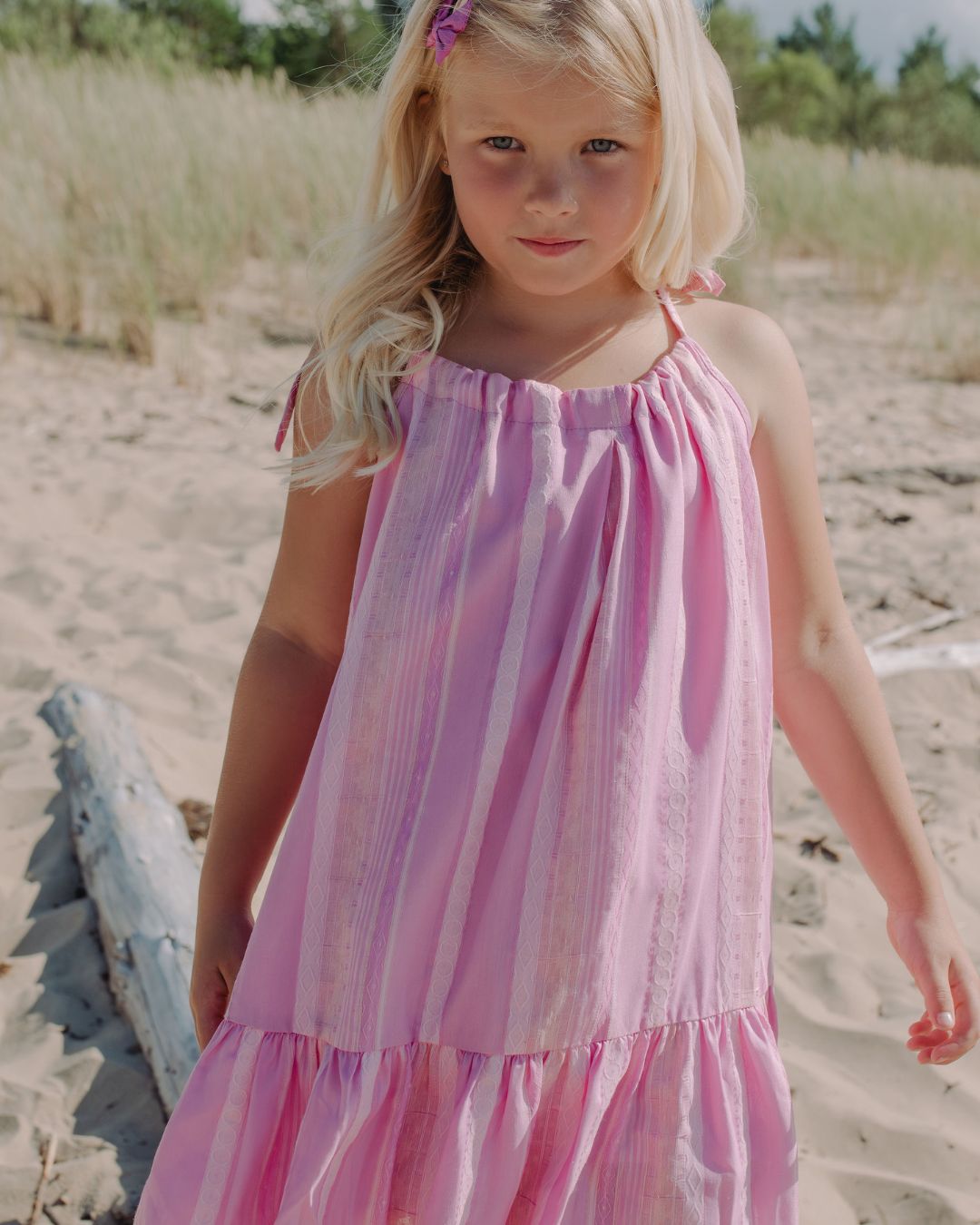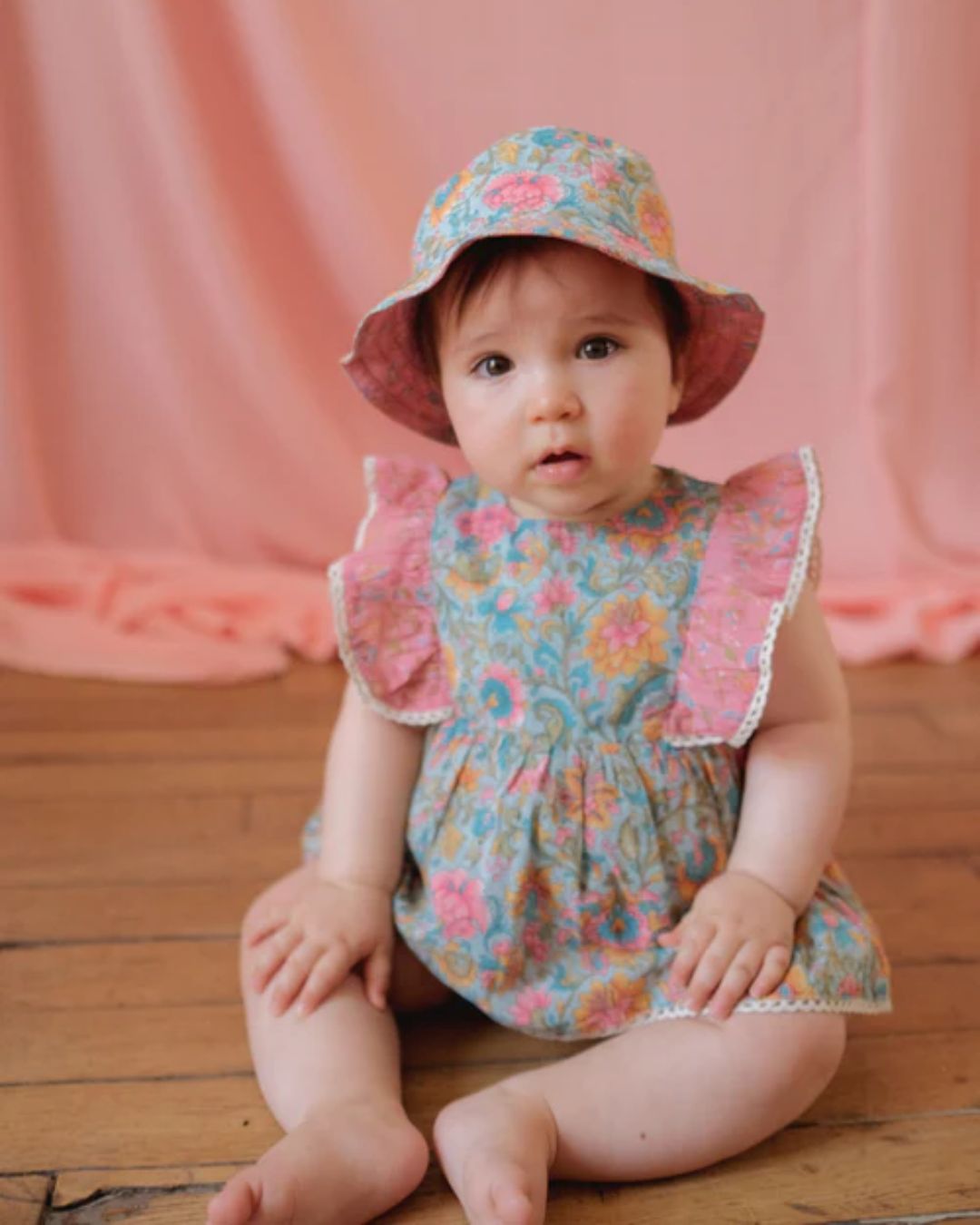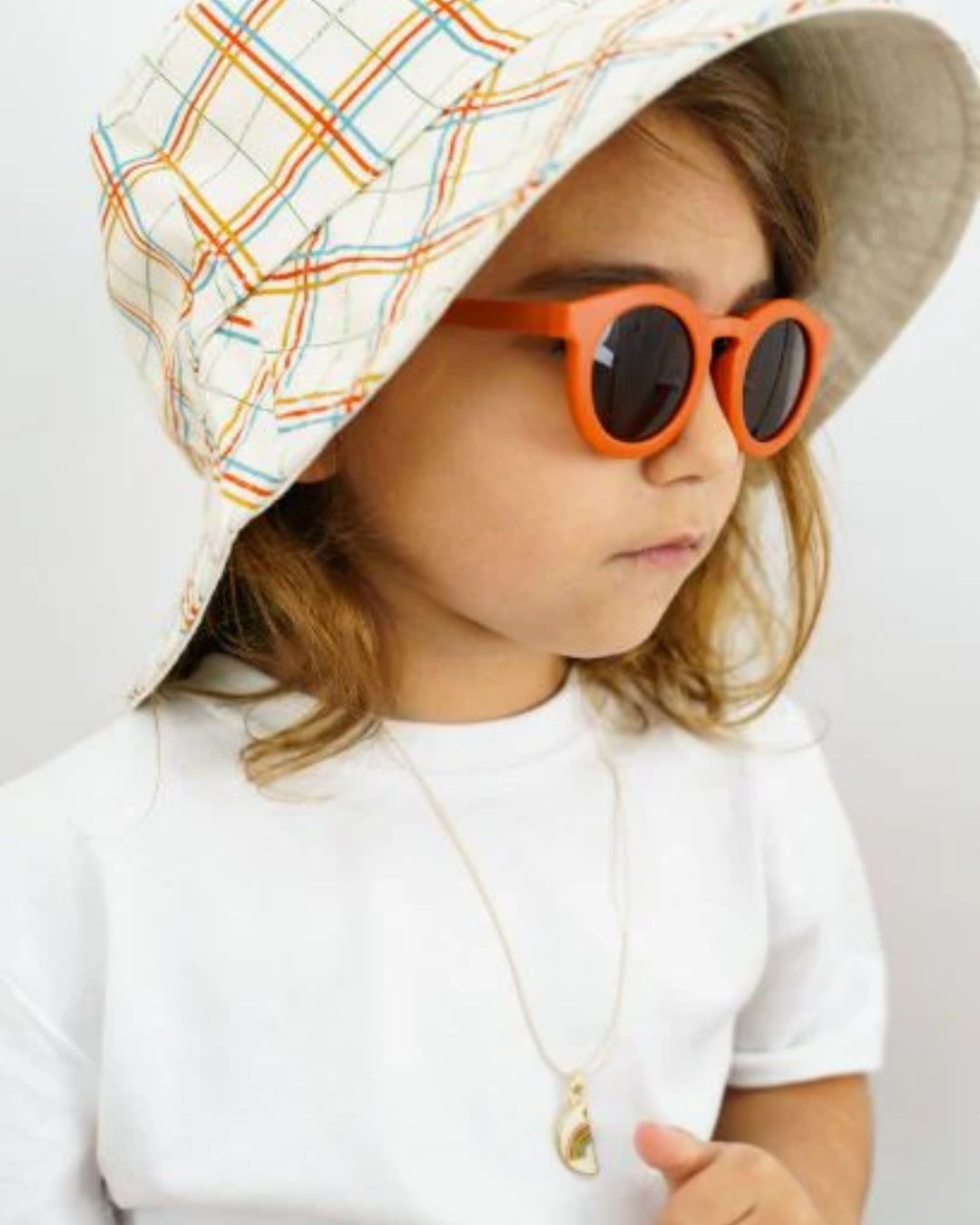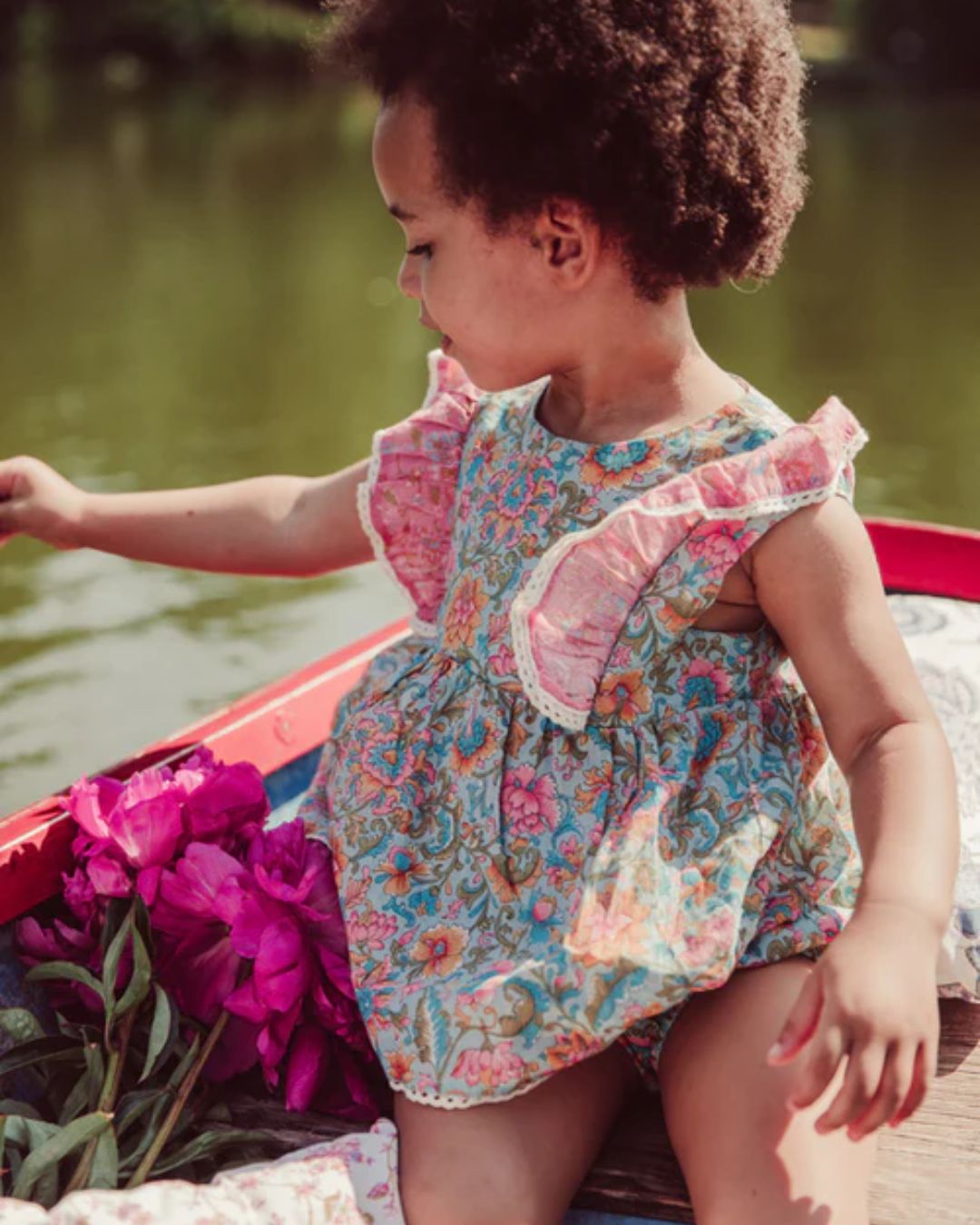Why Bamboo Clothing Is The Secret to Eco-Friendly Fashion in 2025

Bamboo clothing is such an exciting change in the way we think about sustainable fashion today! Here at MiliMilu Lifestyle, we absolutely adore bamboo clothing and how breathable it is. Did you know that the conventional textile industry is one of the planet's biggest polluters? It uses up huge amounts of water, energy, and chemicals, all while creating a lot of waste. But guess what? Bamboo gives us a wonderful alternative that brings together style, comfort, and a commitment to taking care of our environment.
Despite its recent popularity surge, many people still don't understand what makes bamboo such a game-changing material. Women's bamboo clothing provides exceptional comfort while kids bamboo t-shirts offer breathability and softness for sensitive skin. Additionally, sustainable fashion enthusiasts appreciate how women's bamboo t-shirts blend versatility with eco-consciousness. The growing availability of bamboo products makes it easier than ever to make environmentally responsible wardrobe choices.
This comprehensive guide explores why bamboo clothing stands at the forefront of eco-friendly fashion in 2025, examining everything from cultivation practices to fabric production methods and the tangible benefits for both wearers and the planet.

How bamboo is grown and why it matters
The remarkable properties of bamboo clothing begin long before the fabric reaches store shelves. At its source, bamboo stands as nature's marvel of efficiency and sustainability. Understanding how this extraordinary plant grows reveals why it has become a cornerstone of sustainable fashion trends in 2025.
Fast growth and low water use
Bamboo's growth rate is nothing short of extraordinary. Some species can grow up to three feet in a single day, making it one of the fastest-growing plants on Earth. This rapid regeneration allows bamboo to mature and be harvest-ready in just 3-5 years, compared to hardwood trees that typically require 30-50 years to reach maturity.
What makes bamboo particularly valuable for sustainable fashion is its self-propagating nature. Unlike trees, bamboo can be harvested without killing the plant, encouraging regrowth and creating a regenerative resource over time. Once established for about three years, bamboo can get all the water it needs directly from the ground.
Furthermore, bamboo demonstrates remarkable water efficiency, requiring approximately 30% less water than conventional crops. This characteristic is especially significant given increasing global water scarcity concerns. For fashion brands creating women's bamboo clothing, this translates to a dramatically reduced water footprint compared to traditional textile crops like cotton.
No need for pesticides or fertilizers
Another compelling aspect of bamboo cultivation is its minimal environmental impact. Bamboo thrives naturally without requiring pesticides or chemical fertilizers. Its natural resilience to pests and diseases allows it to grow vigorously without the chemical interventions common in conventional agriculture.
Consequently, bamboo cultivation avoids the pollution associated with agricultural chemicals, making it an ideal base material for sustainable fashion. This natural pest resistance is particularly valuable for products like kids bamboo t-shirts, which come into direct contact with sensitive skin.
Interestingly, bamboo actually self-fertilizes. The plant recycles its own leaves, which create a nutrient-rich mulch that gradually improves soil structure and fertility. This closed nutrient cycle reduces the need for synthetic fertilizers by up to 50% in integrated farming systems.
Carbon absorption and soil health benefits
Bamboo's environmental contributions extend well beyond sustainable harvesting. A single tropical bamboo plant can absorb two tons of carbon dioxide in just seven years, whereas a hardwood tree takes 40 years to absorb just one ton. Mature bamboo groves can capture up to 12 tons of carbon dioxide per hectare annually.
In fact, bamboo generates about 35% more oxygen than an equivalent stand of trees. This impressive carbon sequestration ability makes bamboo an effective tool in fighting climate change while providing the raw material for women's bamboo t-shirts and other sustainable fashion items.
The plant's extensive root system offers substantial soil benefits too. Bamboo roots can reach up to 100 kilometers per hectare, providing exceptional erosion control by binding soil and preventing landslides. This root network can reduce topsoil loss by up to 90% on sloped lands compared to unvegetated areas.
Bamboo has remarkable soil restoration capabilities. Research conducted in Colombia demonstrated that introducing bamboo to degraded land enhanced soil quality and decreased soil compaction by over 50%. The plant's resilience on poor-quality soil makes it particularly valuable for rehabilitating depleted areas—a significant benefit for sustainable agricultural practices. These ecological advantages establish a robust platform for eco-friendly fashion. By selecting bamboo-based clothing instead of traditional textiles, consumers are endorsing a cultivation approach that actively regenerates environmental resources rather than exhausting them.

The different ways bamboo becomes fabric
From sturdy plant to silky fabric, the transformation of bamboo into textiles involves distinct processes that significantly impact both the final product and the environment. Behind every bamboo garment lies a manufacturing journey that determines not only its texture and quality but also its ecological footprint.
Bamboo linen: mechanical and eco-friendly
The mechanical method produces what is often called "bamboo linen," representing the most environmentally sound approach to bamboo textile production. The process begins with crushing the woody parts of mature bamboo stalks, followed by the application of natural enzymes that break down the bamboo's cellular walls. This creates a mushy mass from which natural fibers are mechanically combed and spun into yarn.
Bamboo linen typically has a texture similar to traditional linen and offers excellent durability. The manufacturing process involves minimal chemicals and generates little environmental waste, since it relies primarily on physical and enzymatic treatments instead of harsh chemical solvents.
Unfortunately, bamboo linen accounts for a minuscule percentage of bamboo fabric on the market. The reason? The mechanical process is labor-intensive, time-consuming, and significantly more expensive than chemical alternatives. Although this produces genuinely eco-friendly fabric for sustainable fashion brands, economic realities limit its commercial scale.
Bamboo viscose: chemical-heavy process
Most bamboo clothing available today is made through the viscose rayon process—a chemical-intensive method similar to how rayon is produced from wood or cotton. After harvesting bamboo that has matured for at least four years, the material is crushed and soaked in a strong solution of sodium hydroxide (15-20%) at approximately 25°C for about three hours.
This forms alkali cellulose, which is then pressed, crushed, and dried for 24 hours before being treated with carbon disulfide, causing it to gel. The resulting mixture creates a viscose solution that gets forced through spinneret nozzles into a bath of diluted sulfuric acid, which hardens the cellulose into fibers. These fibers are washed, bleached, and finally spun into yarn for women's bamboo clothing and other textile products.
Bamboo lyocell: closed-loop and safer
Emerging as the middle ground between eco-friendliness and commercial viability, bamboo lyocell represents a significant improvement over traditional viscose production. The lyocell process utilizes a closed-loop system where up to 99.5% of the solvent (typically non-toxic amine oxide rather than harmful carbon disulfide) is captured and recycled for continued use.
This dramatically reduces both waste generation and the release of harmful chemicals into the environment. Unlike viscose production, the solvents used can be reused repeatedly, creating a significantly smaller ecological footprint. Furthermore, lyocell production doesn't chemically alter the bamboo's cellulose structure, allowing the resulting fabric to be considered more organic.
For consumers seeking truly sustainable fashion options, bamboo lyocell offers an excellent compromise—though less common than viscose, it delivers the softness and performance benefits of bamboo fabric with substantially less environmental impact. Kids bamboo t-shirts and women's bamboo t-shirts made from lyocell provide the comfort consumers desire with greater ecological responsibility.

Environmental impact of bamboo clothing
Behind every piece of bamboo clothing lies an environmental story that extends far beyond the sustainable growing practices. As we examine the full lifecycle impact, it becomes clear that processing methods make all the difference in determining how truly "green" bamboo fabric actually is.
Energy and water use in processing
The environmental footprint of bamboo clothing varies dramatically depending on how the fabric is produced. Bamboo viscose, the most common form on the market, requires considerable energy to transform bamboo pulp into wearable material. The process involves multiple chemical baths, heating, and extensive washing stages that consume significant resources.
In contrast, the more eco-friendly bamboo lyocell process uses substantially less energy and water through its closed-loop system. This method recaptures and reuses nearly 99.5% of the processing solution, dramatically reducing resource consumption compared to conventional viscose production.
Notably, even with its resource demands, bamboo fabric generally has lower annual carbon emissions (0.3 tons of CO2) and energy consumption (10 MJ/kg) compared to cotton's much higher 2.1 tons of CO2 and 55 MJ/kg. This makes bamboo clothing, even when chemically processed, still a more climate-friendly option than conventional alternatives.
Biodegradability and end-of-life impact
One significant advantage of bamboo clothing is its biodegradability. Unlike synthetic fabrics that can remain in landfills for decades or even centuries, bamboo fabrics decompose naturally within approximately one year when properly disposed of. To clarify, regenerated cellulose fibers like bamboo viscose and lyocell take about six to eight weeks to break down completely, compared to the 11 weeks typically required for cotton.
Even more important for sustainable fashion is that bamboo clothing, when free from synthetic blends or toxic chemical residues, returns to the soil without leaving harmful substances behind. For environmentally conscious consumers looking for women's bamboo clothing or kids bamboo t-shirts, this represents a meaningful advantage in reducing fashion's long-term ecological footprint.
In essence, while all bamboo clothing offers biodegradability benefits, those seeking the most environmentally responsible options should look for products made with bamboo lyocell or mechanically processed bamboo linen, as these minimize the chemical impacts throughout the garment's lifecycle.

How bamboo clothing benefits the wearer
Beyond environmental benefits, bamboo clothing offers remarkable advantages for the wearer, making it increasingly popular for everyday comfort and specialized applications alike.
Soft and breathable texture
The tactile experience of bamboo clothing really sets it apart from conventional fabrics! Bamboo fibers have a naturally round and smooth surface, creating a luxuriously soft feel that’s often compared to cashmere or silk. Isn’t that amazing? Plus, this exceptional softness actually increases with washing, as the fibers align rather than fray.
Breathability is another one of bamboo's standout qualities! The micro-gaps and holes within the bamboo fiber structure allow for superior air circulation. This natural ventilation helps regulate body temperature by efficiently venting excess heat and moisture away from the skin. For women's bamboo clothing, this makes it particularly valuable during seasonal transitions or in variable climates. How cool is that?
Hypoallergenic and antibacterial
Above all, bamboo clothing offers significant health advantages through its natural properties. Japanese scientists discovered a unique antibacterial agent in bamboo called "bamboo kun," which gives the fabric its remarkable ability to resist bacteria. Laboratory testing demonstrated that bamboo fabric reduced bacteria numbers to less than 0.2%, whereas cotton fabric showed a 550-fold increase in bacteria.
This antibacterial quality makes bamboo clothing stay fresher longer without chemical treatments. Furthermore, bamboo repels common allergens such as dust mites by wicking away moisture. This creates an inhospitable environment for allergens, making bamboo ideal for people with sensitive skin or allergies.
UV protection and moisture-wicking
Bamboo clothing provides exceptional sun protection with a UPF rating of 50+, blocking at least 98% of harmful UV rays. This natural UV protection surpasses regular fabrics without requiring chemical treatments.
Equally important is bamboo's superior moisture management. The fabric draws moisture away from the skin up to four times faster than cotton. Scientists attribute this to the micro-holes in bamboo fiber cross-sections. For kids bamboo t-shirts and women's bamboo t-shirts, this means staying dry and comfortable even during active play or exercise.
These benefits combine to make bamboo clothing a practical choice for sustainable fashion that doesn't compromise on performance or comfort.

What to look for when buying bamboo clothing
Making informed choices when shopping for bamboo clothing requires understanding several key factors beyond just style and fit. As the market grows, navigating the differences between truly sustainable options and greenwashed alternatives becomes increasingly important.
Certifications like OEKO-TEX and GOTS
OEKO-TEX Standard 100 certification verifies that bamboo garments have been tested for harmful substances and are safe for human use. This globally standardized test examines every component - from thread to buttons - against a list of over 1,000 potentially harmful substances. The more intensive the skin contact, the stricter the human ecology requirements.
For organic assurance, Global Organic Textile Standard (GOTS) is valuable, yet has limitations with bamboo. Since most bamboo undergoes processing into rayon, it cannot qualify as fully GOTS certified. Nevertheless, GOTS allows up to 10% regenerated bamboo fiber in products labeled "made with organic materials.
Forest Stewardship Council (FSC) certification ensures responsibly managed bamboo sources, offering assurance about the raw material's sustainability.
Transparency in sourcing and processing
Trustworthy bamboo clothing brands demonstrate complete supply chain visibility. Seek companies that openly disclose their manufacturing partners and processes. Ethical producers typically offer information about worker conditions, pay standards, and environmental practices.
Accordingly, responsible brands can provide documentation showing their affiliated knitting and dye houses meet environmental protection standards.
Choosing bamboo lyocell over viscose
Bamboo lyocell represents a significantly more sustainable choice than conventional bamboo viscose. Manufactured using a closed-loop process, lyocell production recycles approximately 99.5% of the non-toxic solvents used.
Primarily, look for terms like "lyocell," "closed-loop," or specific branded options like CleanBamboo® on product labels. These indicate environmentally safer manufacturing methods. Women's bamboo clothing and kids bamboo t-shirts made with lyocell offer superior sustainability credentials throughout their lifecycle.
For sustainable fashion that truly minimizes environmental impact, prioritize bamboo lyocell over viscose whenever possible, coupled with third-party certifications verifying both ecological and social responsibility standards.

Conclusion
Bamboo clothing is an outstanding alternative in the sustainable fashion landscape of 2025. The remarkable growth characteristics of bamboo—such as requiring minimal water, no pesticides, and its ability to sequester significant amounts of carbon—establish a solid environmental foundation for textile production. However, the manufacturing process greatly influences the actual environmental impact of bamboo. While bamboo viscose is the most prevalent form, lyocell and mechanical processing methods provide much greener alternatives, as they use fewer chemicals and follow closed-loop systems. Therefore, conscious consumers should prioritize these more sustainable production methods when selecting bamboo garments.
In addition to environmental benefits, bamboo clothing offers tangible advantages for wearers. The naturally soft and breathable fabric effectively wicks moisture and possesses antibacterial properties, along with providing UV protection. These features make bamboo particularly suitable for sensitive skin, especially in women's bamboo clothing and children's bamboo t-shirts. Furthermore, our collection "There is No Planet B" conveys a strong message to encourage everyone to consider the importance of making eco-conscious choices.
While no textile is perfect, bamboo is undoubtedly one of the most promising materials for the future of sustainable fashion. Its combination of regenerative growing practices, improving production methods, and exceptional comfort positions it as a leader in eco-friendly apparel. Lastly, always seek transparency and certifications when purchasing bamboo clothing. Brands committed to sustainability will readily share information about their sourcing and manufacturing processes. Certifications such as OEKO-TEX and FSC, along with clear labeling of production methods, help ensure that your bamboo clothing lives up to its environmental promises while delivering the comfort and performance you expect from sustainable fashion.













Comments